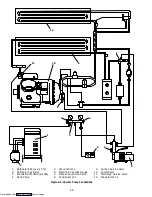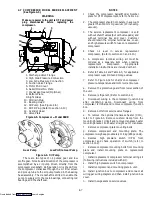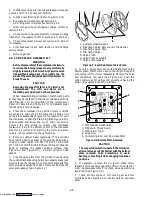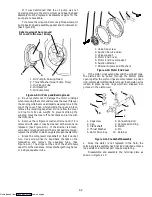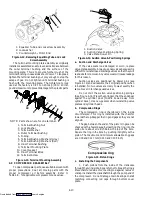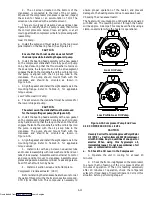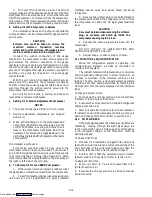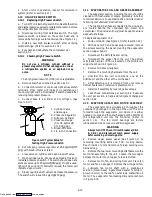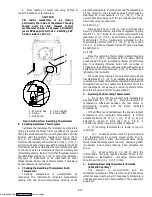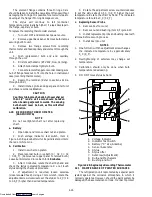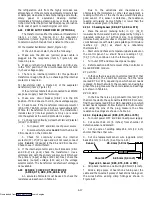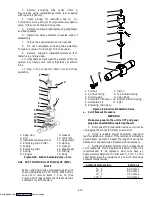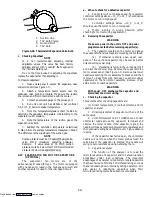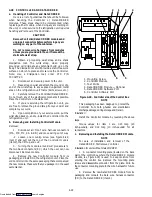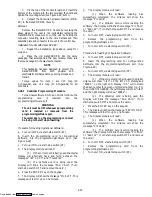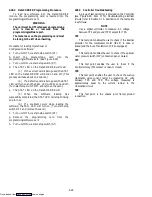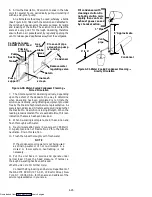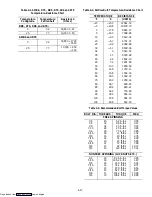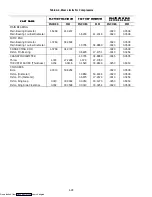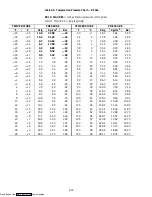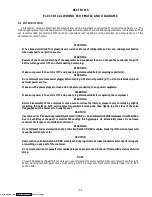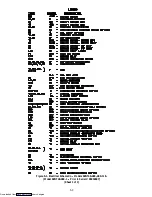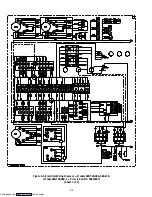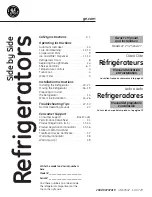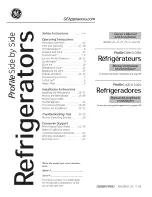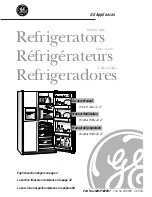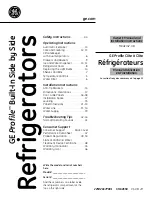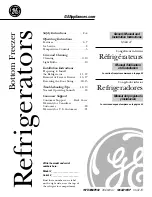
4-20
4. Plug in the connector for the modulation valve.
NOTE
A cold coil is a coil which had not been operating
and is assumed to be at ambient temperature. Hot
coils, taken after the unit has been operating in
deep modulation for a long period of time, may
give higher resistance readings.
b. Replacing the Coil
Remove locking nut and remove coil after
disconnecting wiring. When replacing nut, torque to a
value of 0.41 mkg (3 ft-lb).
c. To Replace Valve
1. Pump down the unit per section 4.3.
2. Remove two bolts from suction service valve.
3. Melt solder at modulating valve connection and
rotate valve and tubing enough to clear compressor.
Remove valve and tubing. Replace defective suction
modulation valve being careful to wrap body of
replacement valve with a wet cloth while brazing. The coil
need not be removed.
4. Install new suction service valve gasket and install
bolts in suction service valve. Torque to a value of 2.77 to
4.15 mkg (20 to 30 ft/lb).
5. Solder all connections and leak check same.
6. Dehydrate and evacuate the unit per section 4.5
and then check and add refrigerant charge per section 4.6 as
required.
4.26 THERMOSTATIC EXPANSION VALVE
The thermal expansion valve is an automatic device
which maintains constant superheat of the refrigerant gas
leaving the evaporator regardless of suction pressure. The
valve functions are: (a) automatic response of refrigerant
flow to match the evaporator load and (b) prevention of
liquid refrigerant entering the compressor. Unless the valve
is defective, it seldom requires any maintenance other than
some minor periodic maintenance as follows:
1. Make sure that the excess capillary tube is secured
to the power head assembly and wrapped with “Presstite”.
2. Make sure that the thermal bulb is tightly secured
to the suction line and wrapped with “Presstite”.
a. Removing Expansion Valve (See Figure 4-27)
6
2
5
3
7
1
4
1. Power Assembly
2. Body Flange Gaskets
3. Seat Gasket
4. Bulb
5. Cage Assembly
6. Body Flange
7. Body Flange Screws
Figure 4-27. Thermostatic Expansion Valve --- Alco
1. Pump down the unit per section 4.3.
2. Remove insulation (Presstite) from expansion
valve bulb and power assembly and then remove thermal
bulb from the suction line.
3. Loosen flare nut and disconnect equalizing line
from expansion valve.
4. Remove capscrews and lift off power assembly and
remove cage assembly. Check for foreign material in valve
body.
5. The thermal bulb is located below the center of the
suction line (4 o’clock position). This area must be clean to
ensure positive bulb contact.
b. Installing Expansion Valve
CAUTION
If the thermostatic valve needs to be replaced,
then the power head and cage assembly are to be
replaced as a pair. They are a matched pair and
replacing one without the other will affect the
superheat setting.
1. Replace all gaskets, make sure to lightly coat with
oil. Insert cage and power assembly and bolts. Tighten bolts
equally. Fasten equalizer flare nut to expansion valve.
2. Leak check the unit per section 4.4. Evacuate and
dehydrate unit per section 4.5 and add refrigerant charge
per section 4.6.2.
3. Clean suction line with sandpaper before installing
bulb to ensure proper heat transfer. Strap thermal bulb to
suction line, making sure bulb is placed firmly into the
indentation of the suction line. See Figure 4-28 for bulb
placement.
4. Check superheat. (Refer to section 1.3 and see
Table 4-6.) Verify at ---18
_
C (0
_
F) container box
temperature.
Downloaded from

